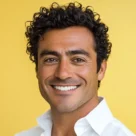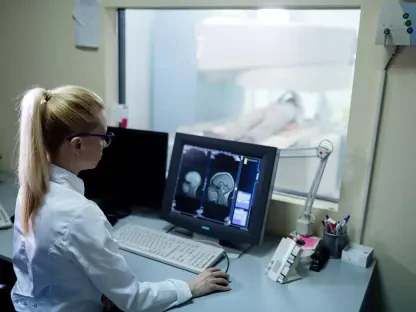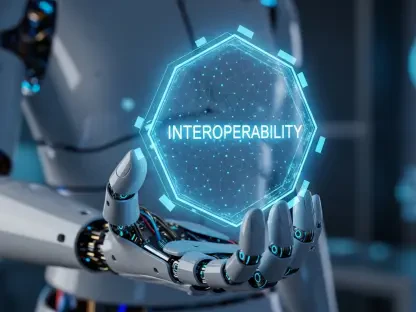In the ever-evolving landscape of healthcare and medical technology, Faisal Zain stands out as a visionary, adept at bridging innovation with practical application. With a strong background in manufacturing medical devices for diagnostics and treatment, Zain has spearheaded advancements that significantly contribute to the field. Today, we delve into the recent strategic shifts at Galapagos and gain insights from his expertise.
What prompted Galapagos to halt its spinoff plans and explore strategic alternatives for all its assets?
Galapagos was poised to focus on its CAR T-cell therapies through a spinoff. However, unforeseen regulatory and market developments prompted a reevaluation. Now, the company is exploring comprehensive strategic alternatives across all its assets, aiming to use these changes to broaden its horizons.
Can you elaborate on the “regulatory and market developments” that influenced this decision?
Regulatory landscapes are always shifting, as are market conditions. Although specific details weren’t disclosed, these developments influence strategic planning as companies strive to adapt to the evolving market and maximize opportunities.
What were the specific objectives of the proposed SpinCo before the change in plans?
SpinCo was designed to fast-track the development and commercialization of Galapagos’s core assets. It aimed to combine existing resources with funds to drive acquisitions or licenses in oncology, immunology, and virology, pushing the boundaries of the company’s expertise.
How does the decentralized approach to cell therapy manufacturing differentiate Galapagos from current industry practices?
Galapagos’s decentralized manufacturing offers treatments closer to the point of care, reducing the time it takes to engineer and expand patient cells. Unlike traditional methods that involve distant laboratories, this approach could lead to more timely therapies, benefiting patients directly.
Could you provide more details about the GLPG5101 program and its development in mantle cell lymphoma?
GLPG5101 is a promising cell therapy initially explored in non-Hodgkin lymphoma. With encouraging data, its development shifted focus to mantle cell lymphoma, a strategic choice aiming for a pivotal clinical study by 2026.
What are the competitive challenges in the mantle cell lymphoma treatment market?
The landscape for mantle cell lymphoma is fiercely competitive, with drugs like AstraZeneca’s Calquence and Eli Lilly’s Jaypirca already established. These treatments set high standards, demanding innovative differentiation from new entrants, like Galapagos.
How do you plan to address these challenges with your therapies?
Innovation is key. By harnessing unique mechanisms and improving treatment efficacy, Galapagos aims to position its therapies as superior alternatives. Engaging in strategic partnerships could be pivotal for overcoming market competition.
What were the initial goals for your clinical-stage immunology drugs and preclinical assets?
The primary goal was to leverage these drugs and assets to build a robust portfolio that addresses significant unmet needs. By pursuing partnerships and licensing deals, Galapagos aimed to enhance its reach and impact in immunology and adjacent fields.
How does Galapagos plan to utilize its current financial resources for transformative business development?
With a strong cash position, Galapagos is well-equipped to pursue substantial transactions. These resources will enable strategic investments in new projects, partnerships, and potentially transformative deals that align with its new business direction.
What role will Henry Gosebruch play in the new strategic direction of Galapagos?
As the new CEO, Gosebruch’s role is pivotal in driving the company’s strategic realignment. His expertise will guide the new vision for Galapagos, capitalizing on opportunities to build a robust drug pipeline and expand its global footprint.
How does Galapagos plan to build a new drug pipeline under the new strategy?
Galapagos will focus on identifying promising therapeutic areas and pursuing strategic collaborations. By leveraging internal R&D and potential acquisitions, the company plans to establish a diverse and forward-thinking drug pipeline.
What are some potential business development activities Galapagos might pursue to attract investors?
Galapagos may explore diverse paths, including strategic partnerships, co-development agreements, and mergers or acquisitions, to add value and attract investor interest. These activities will be aimed at expanding its therapeutic reach and market presence.
Why does Leerink Partners believe that the CAR T-platform alone is not sustainable for an independent company?
The CAR T-platform, while innovative, faces logistical challenges and market competition. Without distinct clinical differentiation and scalability, sustaining a company on this platform alone could prove difficult in attracting continuous investor support.
How does Galapagos address these logistical challenges?
By refining its manufacturing processes and engaging in strategic partnerships, Galapagos aims to overcome these hurdles. Addressing operational efficiency and differentiation will be crucial to enhancing market viability.
Considering the current competitive landscape, what is Galapagos’s vision for its place in the cell therapy market?
Galapagos envisions itself as a leader in cell therapy by driving innovation and meeting unmet medical needs with its decentralized manufacturing. By building strong partnerships and investing in unique therapies, they hope to carve out a distinct and impactful position.
How will Galapagos balance innovation with financial sustainability going forward?
Managing resources efficiently while investing in cutting-edge research will be central to this balance. Strategic alliances and careful resource allocation will support sustainable growth without compromising on the drive for innovation.
What are the next steps for Galapagos following this strategic shift?
The next phase involves careful market evaluations and tapping into synergistic collaborations to enhance their therapeutic offerings. By focusing on strategic acquisitions and leveraging their strong cash position, Galapagos aims to solidify its standing in the industry.
Do you have any advice for our readers?
In today’s dynamic landscape, flexibility and innovation are key. Whether in healthcare or any industry, being open to change and continuously seeking collaborative opportunities can lead to sustainable success.









